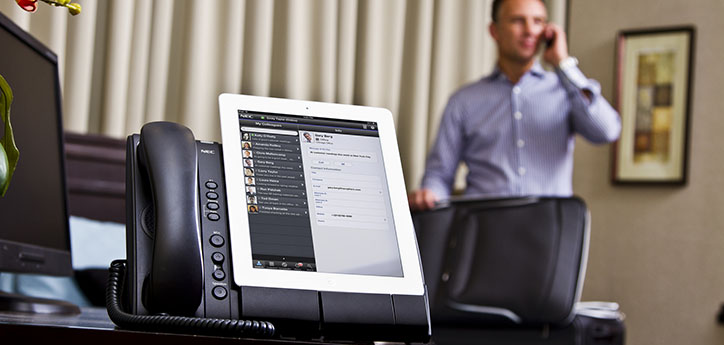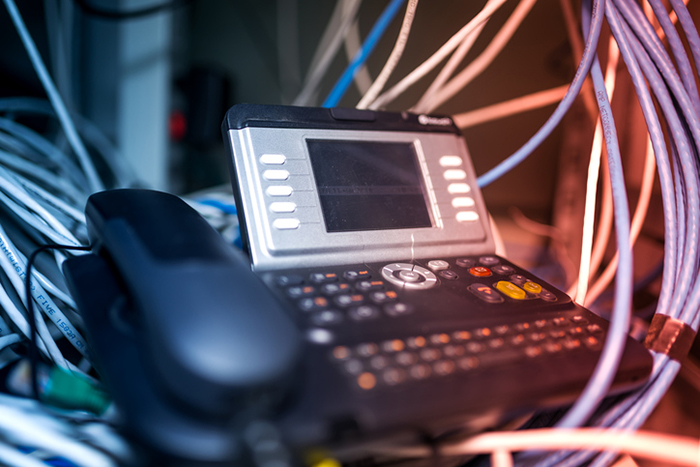Buckle up, tech fans, we are about to delve deep into the world of phone service technology and dissect what is known as a VoIP phone system – or Voice Over Internet Protocol. What we are looking at here is one of the cornerstones of what we perceive as the modern internet, a technology we utilize on numerous occasions throughout our daily routine and genuinely take it for granted at this point. We did our best to cut down on the tech talk and bring this technology to you in a way that’s understandable to everyone so everyone can appreciate it.
What is VoIP?
VoIP is a string of technologies dedicated to transferring standard analog audio signals such as phone recordings into modern digital data that can further be transmitted online. Essentially, a VoIP phone system means free phone calls over the internet; it’s what allows you to talk or produce any sound into a microphone and transmit it over the web. This is the foundation of how many of us communicate over the web and it can be used by pretty much anyone who has a decent internet connection. To give you more specific examples, some of the renowned pieces of software that utilize this technology (and are actually founded on it) are Skype, Viber, Google Hangout, iTel Mobile Dialer, CoolDialer, and more. If you ever used any of these tools to talk to someone (not text each other, talk), VoIP is the technology that transfers your voices across the web.
How does VoIP work?
There are three essential ways to make this phone service work – by using ATA, an IP phone, or connecting it directly. ATA is an abbreviation for an Analogue Terminal Adapter, which takes an old-school analog phone and hooks it up to VoIP by typically utilizing an Ethernet jack or an RJ-11 phone jack. The way the connection operates here is that ATA is connected to the Ethernet jack to the Router which is then connected to the Internet that finally reaches the service provider. The second option is to use an IP phone, which is a phone that has built-in capabilities to transmit calls through the internet. In this case, the connection starts from the IP Phone, which utilizes Ethernet to reach the router and finally the internet and the service provider. Finally, the third choice excludes the service provider and directly connects two users with IP phones. Both devices use Ethernet to reach the router and ultimately the web.
Why should I use VoIP when I have a classic phone line?
While it is understandable that some folks are used to the traditional way of doing things, a lot of people insist that a VoIP phone system is simply the next step in the evolution of long-distance voice chats. There are two major points to raise: price and functionality. First of all, the price of these calls is essentially ZERO. Yes, you do need an internet connection, but these days internet became such a necessity that saying that VoIP devices require internet is equal to saying that standard phones need electricity. Anyhow, while local calls aren’t that expensive, it’s absolutely worth pointing out that international chats are also free through the power of the web. And secondly, VoIP connections are more stable, functional, and reliable. As long as your internet connection is strong, there are far fewer things that can disrupt your connection than with traditional calls.
How does a standard phone call via VoIP operate?
The most important concept to grasp here is the idea of digitizing. This is a technological process that converts visual or audio data into the digital form or a form that can be processed by a computer. This way, they can be measured in bytes and then transferred through the web. So essentially, as soon as a connection is established, both sides start transmitting data at a certain rate – 64 Kbps for example – racking up megabytes of data and building up the total size of any given call. It is worth noting that most of the transmitted data is wasted, making VoIP chats not the best option for limited internet connection. As you probably know by know, you should NOT use this technology when you’re traveling abroad and your phone is in roaming regime.
Featured Photo by NEC Corporation of America / CC by
Posted on February 15, 2023




